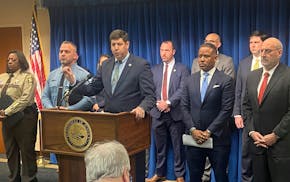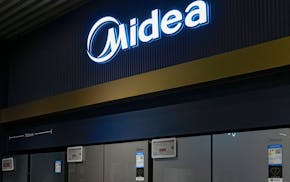The Anoka-Hennepin school district, the largest in Minnesota, is weighing how to close a $21 million budget gap for next year. Possible solutions could mean larger class sizes and cuts to dozens of positions districtwide. Or taxpayers may be asked to pay more to support school operations.
"The reality is when we make budget cuts, there absolutely will be pain involved," said Board Member Zach Arco at Monday night's meeting, which included a discussion of two recommended options for the second phase of a budget reduction process.
The first phase already cut more than 40 positions and $5 million from the district's central office and administrative departments for this budget year.
Superintendent Cory McIntyre said the cuts are necessary because of a "convergence of factors" hitting most districts in the state, including declining enrollment, the sunsetting of pandemic relief funds, inflation, higher-than-budgeted raises in employee contract settlements and new mandates from the state.
'Cut now, act now'
The first of two proposed options is billed as the "cut now, act now" route. It would axe another $7 million from the central office and administrative offices by eliminating another 90 to 100 positions. (The first phase of the plan cut 50 central office staff for this school year.) If approved, the additional cuts would shrink the number of central office positions by more than a third from two years ago.
"We are already very lean" at the central office, McIntyre said in September, adding that additional cuts are "really going to challenge us, but I know the intent is to continue to make sure we can do everything we can at the classroom level."
As part of that option, school-level reductions would increase elementary class sizes would by one student. Middle and high school classes would grow, too; starting next school year, the average middle school class would jump from 29 to 33. The average high school class would have 34 students.
Cut some, ask for more later
The second option would make fewer cuts now, draw down the district's reserve funds and then go to voters for more money. It involves eliminating dozens of instructional coaches and student interventionist positions earlier than planned, cutting another $5 million from district and central office services and using money from the general fund to maintain other expenses until 2025, when the district (pending board approval) would ask voters for an operating referendum.
If approved, that approach would drop the district's fund balance to 6% of general fund expenditures. The current board policy is to maintain a fund balance of at least 10% of general fund expenditures.
Anoka-Hennepin's current operating referendum brings in about $1,154 per student, but the state-allowed cap is about $2,200 per student. If increased to the cap amount, a referendum would bring in another $40 million, McIntyre said.
According to community feedback collected through surveys and community meetings over the last month, nearly 90% of respondents said they supported the referendum option. Parents and families also expressed concern about growing class sizes as a result of cuts.
Decisions in November
The two options have already been revised based on board members' requests to reduce cuts that would mean fewer teachers at schools, McIntyre said.
At one point in the discussion, the district floated changes to middle and high school class schedules to save money, but that was removed after board member feedback. At last month's board meeting, several board members thanked district staff for transparency about potential cuts and responsiveness to board and community feedback. On Monday, several board members requested more details about how the proposed cuts would be felt across the district and in schools.
"This is a big district with a lot of money and of course, we're always thinking, 'How are these things going to impact kids?'" Board Member Linda Hoekman said at the meeting. "We really still have a lot to unearth."
Board members will vote on a path forward at the Nov. 25 meeting.

Accomplished climber, photographer who recently moved from St. Paul missing on mountain

Walz: State had no advance notice of federal raid in Minneapolis

DOGE cuts federal money for upgrades at Velveeta plant in New Ulm

Five members of Minneapolis Highs street gang found guilty of racketeering conspiracy

